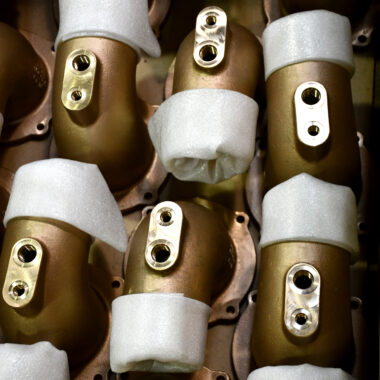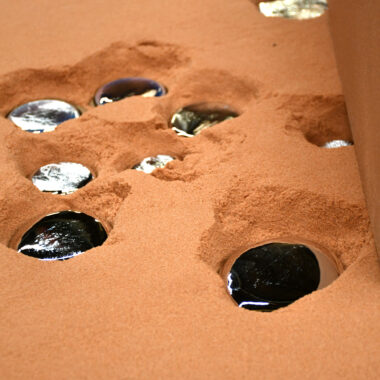Crafting Perfection: How to Achieve High-Quality Aluminum Castings Every Single Time
In the realm of aluminum casting, the quest of perfection is a continual trip that calls for a meticulous approach and an eager understanding of the details entailed. Attaining regular high-grade aluminum spreadings requires a detailed grasp of the processes, from picking the ideal alloy to performing exact mold designs and carefully managing casting parameters.
Comprehending Aluminum Spreading Procedures
Aluminum casting procedures, vital in the production market, involve the intricate change of molten aluminum right into solid types via a series of carefully regulated steps. Comprehending these processes is extremely important to accomplishing high-grade aluminum spreadings regularly - about aluminum casting. The key approaches utilized in light weight aluminum casting are die spreading, sand casting, and financial investment casting

Each of these processes has its benefits and is chosen based upon aspects like intricacy, volume, and preferred finish of the light weight aluminum spreading. about aluminum casting. Understanding the intricacies of these techniques is vital for suppliers aiming to create top quality aluminum spreadings consistently
Choosing the Right Light Weight Aluminum Alloy
Selecting the suitable aluminum alloy is a vital choice in the production of top quality aluminum castings. The choice of alloy dramatically affects the residential or commercial properties and attributes of the end product. Different light weight aluminum alloys supply differing levels of strength, rust resistance, machinability, and thermal conductivity. When choosing an aluminum alloy for spreading, it is important to take into consideration the particular requirements of the application to ensure optimum efficiency.
One of one of the most typically made use of aluminum alloys for casting is A356. This alloy supplies outstanding castability, high toughness, and great corrosion resistance, making it ideal for a wide variety of applications. Additionally, 6061 light weight aluminum alloy is favored for its superior weldability and great mechanical residential properties. For applications needing high strength, 7075 aluminum alloy is a prominent choice due to its extraordinary strength-to-weight proportion.
Along with mechanical homes, factors to consider such as price, schedule, and post-casting processes ought to likewise affect the option of the ideal aluminum alloy. By meticulously evaluating these elements, producers can ensure the manufacturing of top quality aluminum castings that satisfy the preferred specs.
Carrying Out Appropriate Mold And Mildew Layout
Creating a reliable mold and mildew design is important for making sure the successful production of high-grade aluminum spreadings. Correct mold and mildew layout plays a significant role in attaining the why not try this out wanted attributes of the final item. To carry out a successful mold layout, elements such as why not find out more material circulation, cooling down rates, and part geometry have to be meticulously considered.
One trick element of mold layout is making certain correct filling and solidification of the aluminum within the mold and mildew tooth cavity. This includes developing jogger and gating systems that promote smooth steel flow and prevent issues such as air entrapment or incomplete filling. In addition, including cooling networks into the mold and mildew style helps control solidification rates and lower the danger of porosity or shrinkage flaws.

Controlling Spreading Parameters

Ensuring Post-Casting Quality Checks
To keep the high top quality of aluminum spreadings, complete post-casting top quality checks are important. After the spreading procedure is completed, it is important to make certain that the last products satisfy the wanted specifications and requirements. Among the primary quality checks entails examining the surface coating of the spreadings to determine any kind of defects such as porosity, cracks, or surface irregularities. This visual assessment is often supplemented by non-destructive testing methods like ultrasonic screening or color penetrant examination to spot internal defects that might compromise the honesty of the spreading.
Dimensional accuracy is an additional crucial aspect that must be validated throughout post-casting high quality checks. Measurements of key measurements and resistances should be required to validate that the castings satisfy the needed specs. Furthermore, mechanical buildings such as firmness, tensile strength, and effect resistance may require to be examined through material testing to make sure that the castings have the needed stamina and sturdiness for their intended application.
Final Thought
In conclusion, attaining high-grade aluminum spreadings requires a thorough understanding of the spreading processes, choosing the appropriate alloy, creating molds properly, managing spreading parameters diligently, and carrying out post-casting quality checks carefully. By complying with these steps, manufacturers can continually produce aluminum spreadings that meet the highest requirements of top quality and performance.
Attaining consistent top notch light weight aluminum castings demands a detailed understanding of the procedures, from selecting the suitable alloy to executing accurate mold styles and thoroughly managing spreading criteria. The primary methods used in light weight aluminum casting are die casting, sand casting, and investment casting.
Investment casting, likewise understood as precision casting, includes producing wax patterns that are covered in ceramic to form molds.Selecting the appropriate aluminum alloy is an essential decision in the manufacturing of high-quality aluminum castings.Guaranteeing precise control over spreading parameters is crucial for keeping uniformity and high quality in aluminum casting production.